
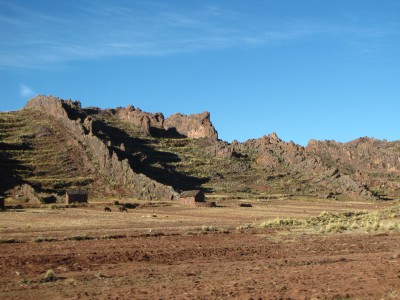
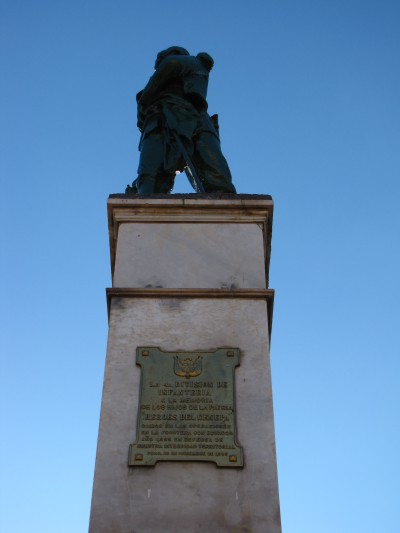
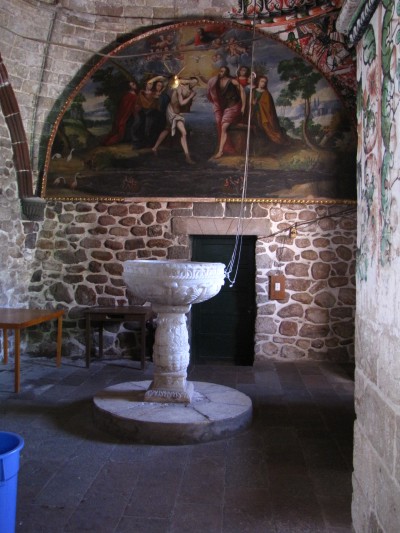
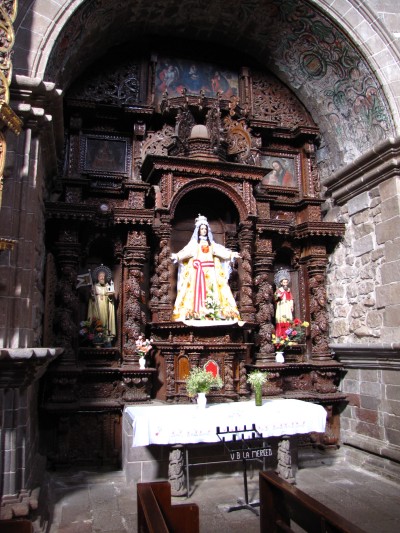
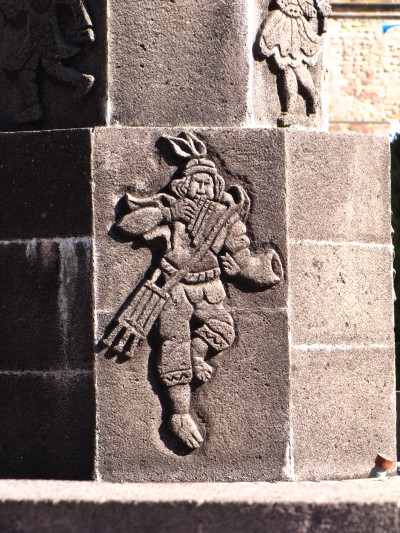
Wednesday, June 9, 2010
As the day before, we got another 6am wakeup call, but this time we did get picked up at 6:45. Our guide, Adrian, had a speaking cadence like Borat, which was nice, especially before 7am in the morning. We stopped for a minute in Puno, where we picked up two more passengers, then we drove along the lake's coastline towards the border, with a short stop halfway in Juli. Interestingly, there were a couple of spots where out of nowhere, there were some jagged hills, as if the ground had jutted up in an earthquake or something. We saw it two or three times, and it really stood out from everything else that was flat or gently sloping. There was a big traffic jam in Juli because the main square was closed to set up for a parade, and people laid on their horns when our vehicle stopped in the middle of the street so we could get out. In Juli, we went in a Jesuit church, which a little different (and a little more uplifting) from the Catholic ones. The stop wasn't for long, then we headed out to Copacabana.
 |
 |
 |
 |
 |
 |
The border crossing was simple and straightforward. Luckily we already had our Bolivian visa from the consulate in Los Angeles, and this made it much much much easier. Our Bolivian guide, Gustavo (his email if you want to book with him), was very good, and very helpful with the border crossing and everything else that day. He had lived in the US for 7 years, and his English was flawless. We took a short drive from the nameless border town to Copacabana. In town, we looked at the main church, Basilica of Our Lady of Copacabana, which was Catholic but with Aymara touches. It's too bad we couldn't take pictures, because it was much "happier" looking than other churches we'd seen. Gustavo told us a story (that hopefully we haven't butchered with our memory) of how Copacabana in Rio de Janeiro came to take the same name. From what we recall, there was a gentlemen who had visited the church in Copacabana, Bolivia, who found himself stranded on a shipwreck about a mile from the beach in Rio de Janeiro. He prayed to the Virgin Mary for her to rescue him, and then he set off swimming to shore. When he safely made it to shore, he decided to name the beach Copacabana in thanks.
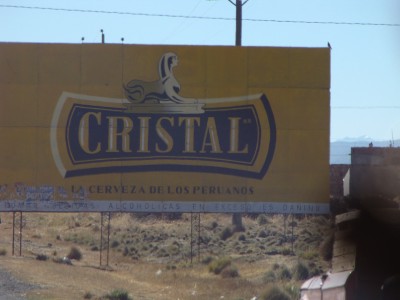 |
 |
 |
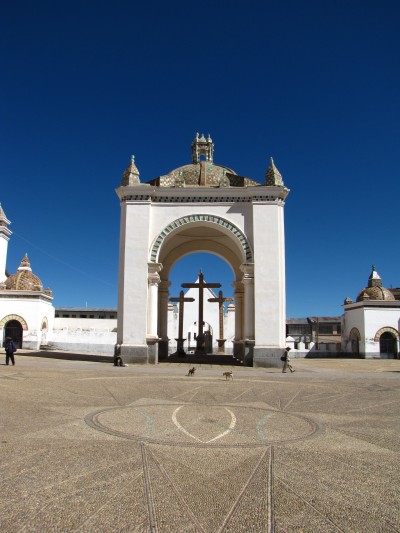 |
 |
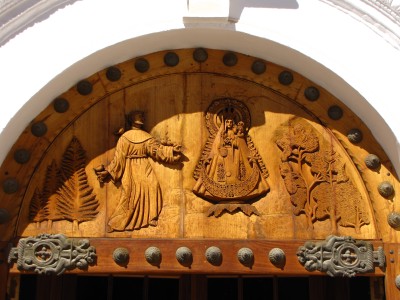 |
We walked through town, and it was quite small. There were a couple of areas full of small storefronts, and there were also some areas set up like farmers markets. Gustavo got some popcorn, or at it least looked like popcorn, but the kernels were huge. While Puno has over 100,000 people, Copacabana has only 3000 people. We walked literally from end to end. If we come back to Lake Titicaca, we will almost certainly stay on the Bolivian side, because the area is much smaller and the cost is much lower, not to mention the scenery seemed better. Our walk ended when we passed the Navy base (ironic for a landlocked country) and boarded our boat to go to Moon Island. There wasn't a whole lot to see, but the boat was much faster, and the ruins we did see were nice. Half of the ruins were still in their original shape, and the other half had been "updated" to show what they looked like originally.
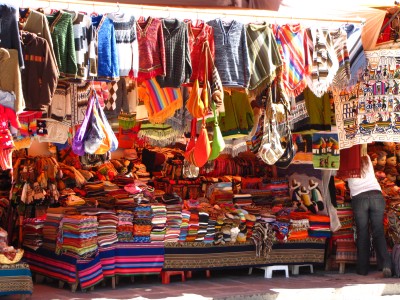 |
 |
 |
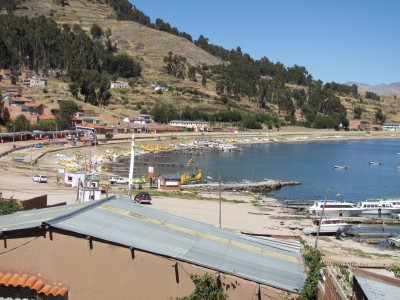 |
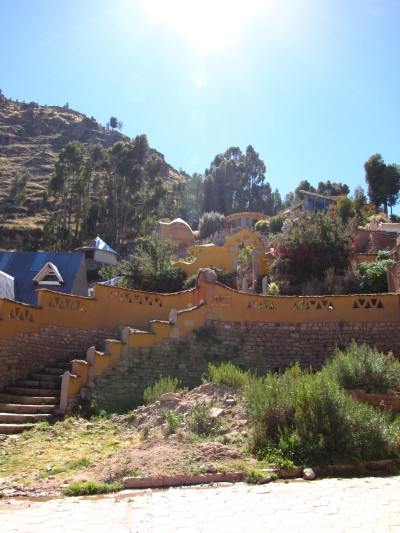 |
|
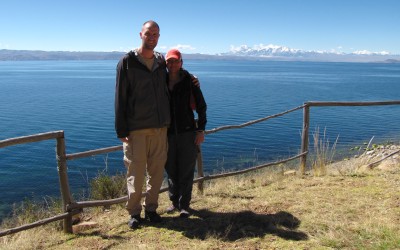 |
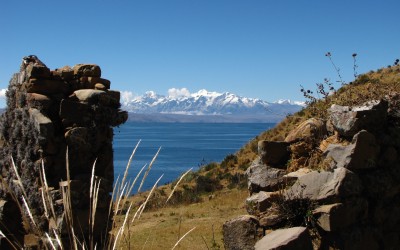 |
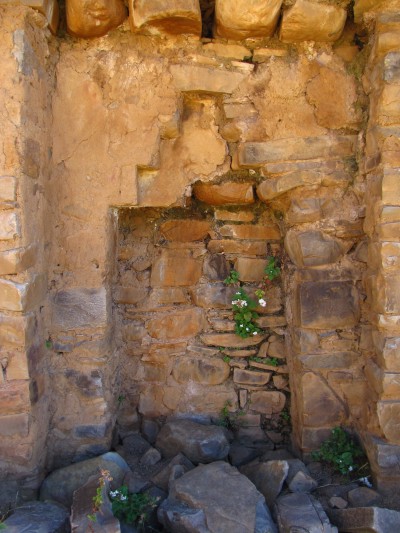 |
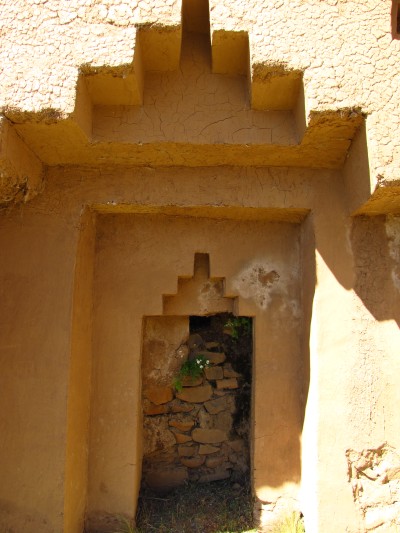 |
From there, it was a short ride to Sun Island. We had lunch - Quinoa soup again (very good) - and then went to see a famous Incan fountain. At lunch, we asked Gustavo if we could leave earlier the following day so that we could make sure to be in Uyuni for sunset, and Gustavo arranged it for us, which was very nice, especially because others would be waking up even earlier.
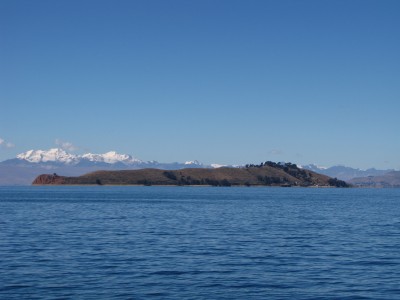 |
|
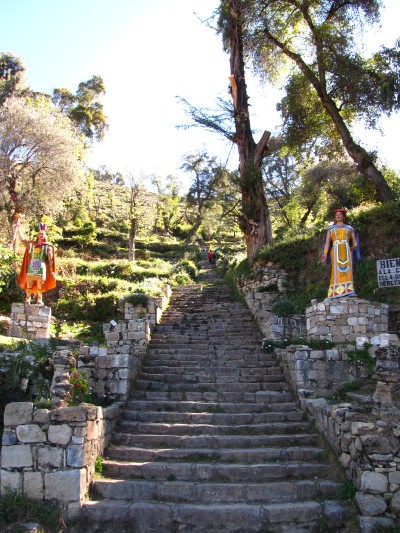 |
|
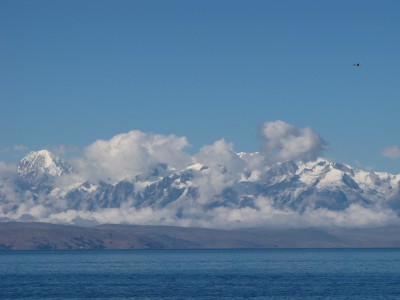 |
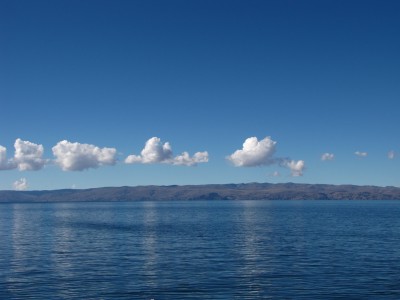 |
From Sun Island, we headed southeast to Bolivia's version of the Uros islands, which were uncrowded and also not as "commercial." On the way, we participated in an Incan ritual, where we were doused with water from Cantua flowers while repeating the phrase "don't lie, don't cheat, don't be lazy" in the native tongue. As religious credos go, the "don't lie, don't cheat, don't be lazy" is right up there with " Do unto others as you would have them do unto you." Between those two, you don't really need anything else. We also got a standard Bolivian introduction, where after the Incan ritual we said a little toast and had a drink with the local firewater called chuflay (pronounced "shoo fly").
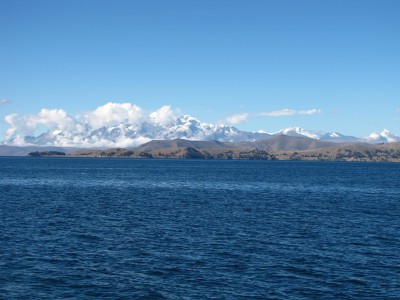 |
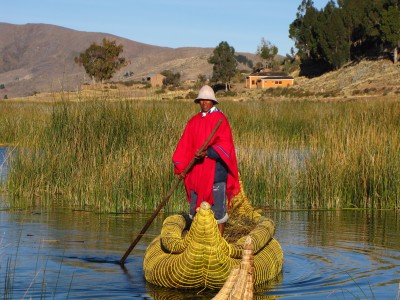 |
 |
|
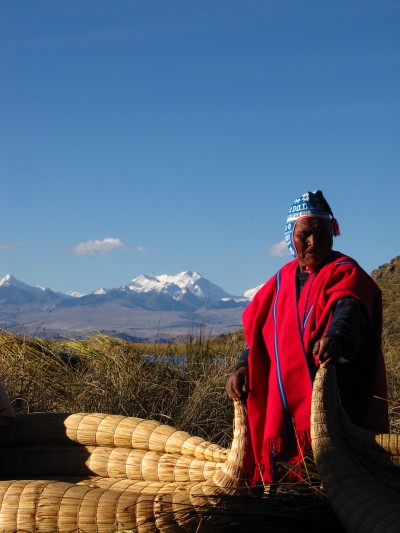 |
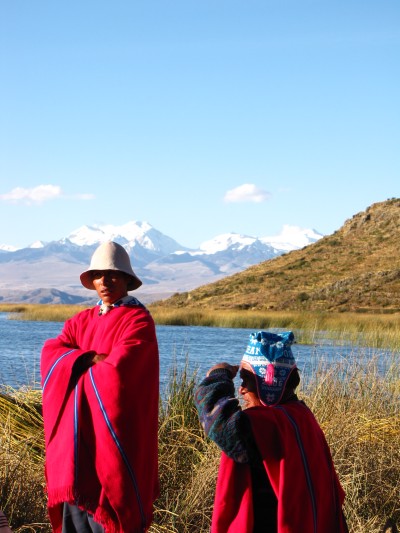 |
Anyway, from the floating islands, we traveled to Huatajata, and after getting off boat went to a small museum with items about the altiplano, including some history on the Tiwanaku people. From Huatajata, we drove to La Paz, about an hour and a half away. The city looked nice from above - it fills up a big bowl. In fact, "bowl" is not even appropriate - its more like a glass. Unlike most cities where the rich and famous live in the surrounding hills, in La Paz the elite live as low as possible, for more air and more warmth.
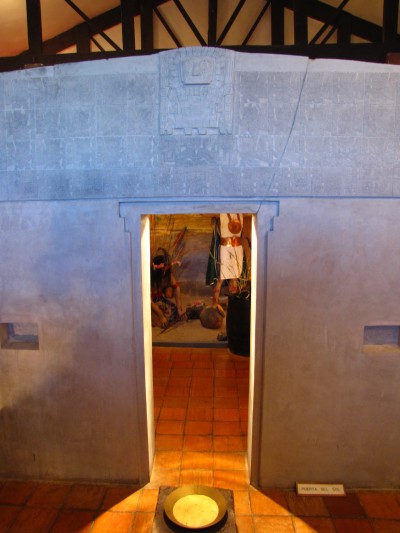 |
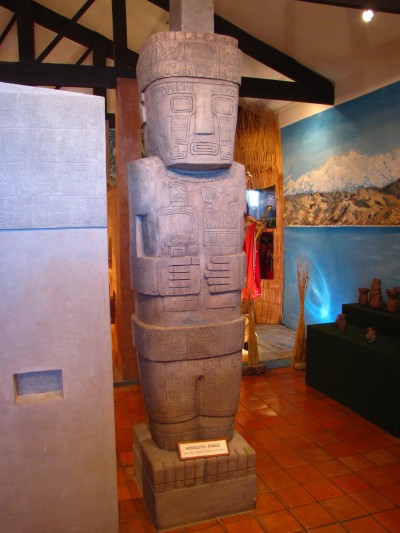 |
 |
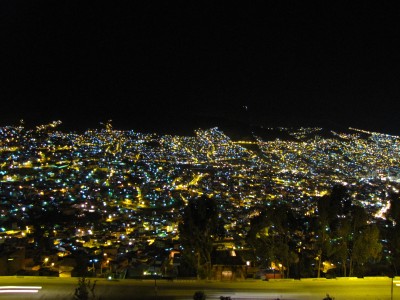 |
We were staying at the Radisson Plaza La Paz, right in the middle of downtown. We walked around looking for dinner, but quickly gave up and came back to hotel restaurant/bar. La Paz seemed nice - and we'll probably be back one of these days - but we were tired and just wanted to eat and go to sleep. We watched some Bolivian soccer while eating, wondering if it was the game going on 2 miles away, and then went up to our room. In the room, we sniffed a couple of times, and then Crystal asked if it smelled like gasoline. Justin confirmed that, and at first we worried there was some sort of leak. As it turned out, it was all of our bags, which were stored below deck on the catamaran, and somehow got gasoline on them. It was overpowering, and we were worried that all of our recently cleaned clothes were dirty, but it seemed to just be the bags themselves.